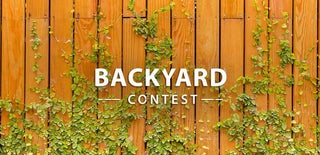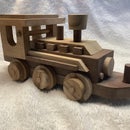Introduction: Cedar Garden Shed
Several years ago, I decided that I wanted to build a cedar garden shed in the back yard to store my lawn mower and other items that were filling up my garage. I did a search online for garden sheds and dug around until I saw a style that I liked and found plans for that particular design. Problem was it was too small and there were a number of features that I wanted to change. I didn’t know much about building a shed so I found a book at Home Depot that was titled “Building a Shed” by Joseph Truini. Using that book as my guide and some CAD software I designed my own version of the shed I saw online.
This was a huge project and a proper tutorial on how it was built containing dimensions for all of the parts, materials list, construction details, etc. would end up being pretty long. Heck, I could make a pretty extensive tutorial on just how I built the door. So, my intent here is to take a 30,000-foot view of the build, show some of the major steps, and hopefully provide ideas and inspiration for your own project.
Supplies
For the longest time I kept every receipt for all of the materials that I purchased for the garden shed build. I ended up with a huge pile of receipts, many of which had faded over time. So, faced with the daunting task of sorting through all of that mess I abandoned the idea of any kind of detailed materials list and ultimate cost of the project. If I were pressed for a guess, I’d say that I spent about $5,000 dollars for 224 square feet of dried in space. I bought everything from the various hardware and building supply stores in the area... Home Depot, Lowes, and Ace Hardware. There was nothing exotic and I pretty much built everything from scratch including the front door and all the windows. I found a garage door that was on sale for a ridiculously low price so I couldn't resist. I'm glad I did as building a roll up garage door is a bit of a fiddly process in getting it balanced properly.
Step 1: Foundation
I settled on a pier and beam foundation. I would have preferred a concrete slab foundation but dang it… concrete is expensive. So, pier and beam it was.
The building is comprised of a 12 foot by 12 foot section and an 8 foot by 10 foot section. I got cute with the cornerstone as you can see. When it was all said and done, I think I ended up with about a ton and a half of concrete to hold the structure down. I embedded quarter inch bolts in the foundation blocks so it is quite a solid foundation.
The beams are 2 by 6 lumber and the decking is ¾ inch tongue and groove plywood. The decking was sealed with a primer and then I ended up painting over it with some porch paint.
Step 2: Walls
The walls were framed with regular old 2 by 4s. The headers over the windows and front door were double 2 by 4s and the header over the garage door was a double 2 by 8. Everything is held together with 3 inch coated deck screws.
The siding is 1 by 6 cedar boards that I ran though my router table so that I ended up with a channel lap. The garage smelled great when I was milling these boards. I love the smell of cedar. I used galvanized siding nails that had a twist to them to keep them from backing out over time. I predrilled the siding to keep from splitting the cedar when I drove in the nails.
Step 3: Rafters and Decking
The rafters were constructed using 2 by 6 lumber and the apex was reinforced (glued and screwed) with OSB for a little added strength. Roof decking was 1 by 6 cedar.
Step 4: Gable Ends
The gables were framed to accomodate a couple of different kinds of windows. On the front side I will have fixed diamond shaped windows and on the back there will be a rectangular removable window. Once the framing was done the channel siding was continued to cover the gables. A ladder frame overhang gives the roof a nice finishing touch.
Step 5: Tar Paper and Shingles
OK... this part of the build wore me out. I used an extension ladder to shingle the roof. I have no idea how many times I went up and down that ladder but it was a bunch. My legs hurt just thinking about it.
It was really windy the day I put the tar paper on so I made a tool to hold the roll of paper and I clamped everything down to hold the paper in place until I got the staples in it.
And while it was a very strenous operation it was an immensely statisfying process!
Step 6: Lawn Mower Test Fit
I didn't have any doors or windows installed or even a ramp built yet but I couldn't wait. I grabbed some loading ramps to get the mower inside its new home.
Step 7: Windows and Front Door
I bought sheets of glass from Home Depot for my windows which were framed using pine. I set up a latching system that allows them to be tilted back for ventilation. The window frames are simple tongue and groove joinery with a rabbet on the inside to accomodate the glass sheet. I used clear caulk to seal the glass in the frame as well as glazing points to hold it securely in place.
The door was a lot of fun to build. I made it out of rough cut 2 inch thick cedar. It only cost about $100 in material so it was a lot cheaper than buying one. The glass on the door was installed the same way as I did for the windows using caulk and glazing points.
Step 8: Garage Door
Lowes had a close out sale on this door and it was a little over $100. I figured there was no way I could build one for less and like I mentioned before garage doors are kind of fiddly when it comes to balancing them properly.
It was actually pretty easy to install and had a slick way of tensioning the spring. So very happy with my roll up door!
At this point the building is dried in and I'm ready to start on some of the finishing touches.
Step 9: Deck and Arbor
The deck was framed with 2 by 6 lumber and then decked with 2 inch thick rough cedar that I planed down a little to make it smooth. It is a rock solid deck. I poured a concrete landing to keep the bottom of the stairs out of the dirt but I did end up using pressure treated wood for the risers just to be safe.
The original shed that I based my design on had a neat little arbor over the entry way. I added a flag pole to mine just for the heck of it.
Final touch was a bottle opener with a magnetic bottle cap catcher. I love sitting on the porch with a cold beer in the evening after I've mowed the lawn.
Step 10: Ramp
Pressure treated lumber holds a load of dirt that I will end up sowing with grass seed. Scrap pieces of lumber will bridge the gap between the ramp and the doorway.
Step 11: Deck Chairs
Time to sit back, grab a cold one, and enjoy the backyard!
Thanks for checking out my shed.
Later!
Willy

Second Prize in the
Backyard Contest













